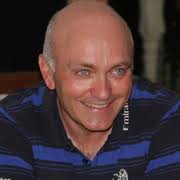Combined meeting with The Rotary Club of East Geelong
Tonights meeting was held at the Hub in east Geelong and was a combined meeting. Both the East Geelong President Brian Humphry and also Peter Kavenagh chaired the meeting
Lots of togetherness was the order of the night.
The presentation tonight was from Mark whose reputation is recognized around the world
Mark works at the Australian Animal Health Laboratory (AAHL)
He spoke on the latest developments in sex selection in relation to Chickens.
Differentiating between males and females pre-hatch, by adding a biological marker to the sex chromosome, is a new gene technology set to impact the poultry industry.
Mark spoke about how this latest inovation will provide the ability to identify the sex of the little chicks long before they hatch.
This step alone could offer massive efficiencies in the chicken industry. ie the ability to detect and remove male chicks pre-hatch.
Mark went on to explain how the sex selection works and also how gene makers are used and how the knowledge of Gene editing can possibly have enormous ramifications in the control of animal pests.
He believes we have had our Industrial Revolution, Our Electronic Revolution and that it is now time to have our Biological Revolution.
With what he presented this all seems possible
.jpg)
Resume for Dr Mark Tizard
-----------------------------
Mark is a Senior Scientist in genome engineering at CSIRO’s Australian Animal Health Laboratory.
He began his career in the UK in the early days of gene cloning as part of the team that was first to identify and produce the malaria merozoite major surface antigen for vaccine studies (Holder et al, 1984, Nature).
He came to Australia and CSIRO following the impact of postdoctoral work in mycobacterial research with relevance to Australia (in Johne’s disease) in which he identified, characterized and developed a unique marker for the disease causing agent.
Changes in CSIRO gave him the opportunity to explore the emerging field of RNA interference and microRNA biology.
His group was the first to catalogue the microRNA repertoire of the chicken (Glasov et al, 2009, Genome Research), a model system in which he later developed a novel approach for RNAi delivery by minimal transgene.
This involved developing and applying tools from another emerging field – gene editing.
Improvements in these techniques from his lab have led to very efficient methods to edit the chicken genome, one spin off of which is a new method to remove males from the egg-layer industry without having to hatch and cull day-old chicks (the current practice) – though it is yet to go into industry practice.
With the advent of CRISPR/Cas9 technology the ease of applying gene editing in poultry lead Mark to broaden his horizons and to take a look at how these techniques might be applied in the genetic control of vertebrate pests.
His current interests are to see if gene editing in the cane toad, to make it less toxic to predators, can help reduce its devastating environmental impacts.
In a distinctly different area he is also exploring the possibilities of a gene technology known as gene drive for the control of pest fish species, particularly carp, and invasive rodents.
